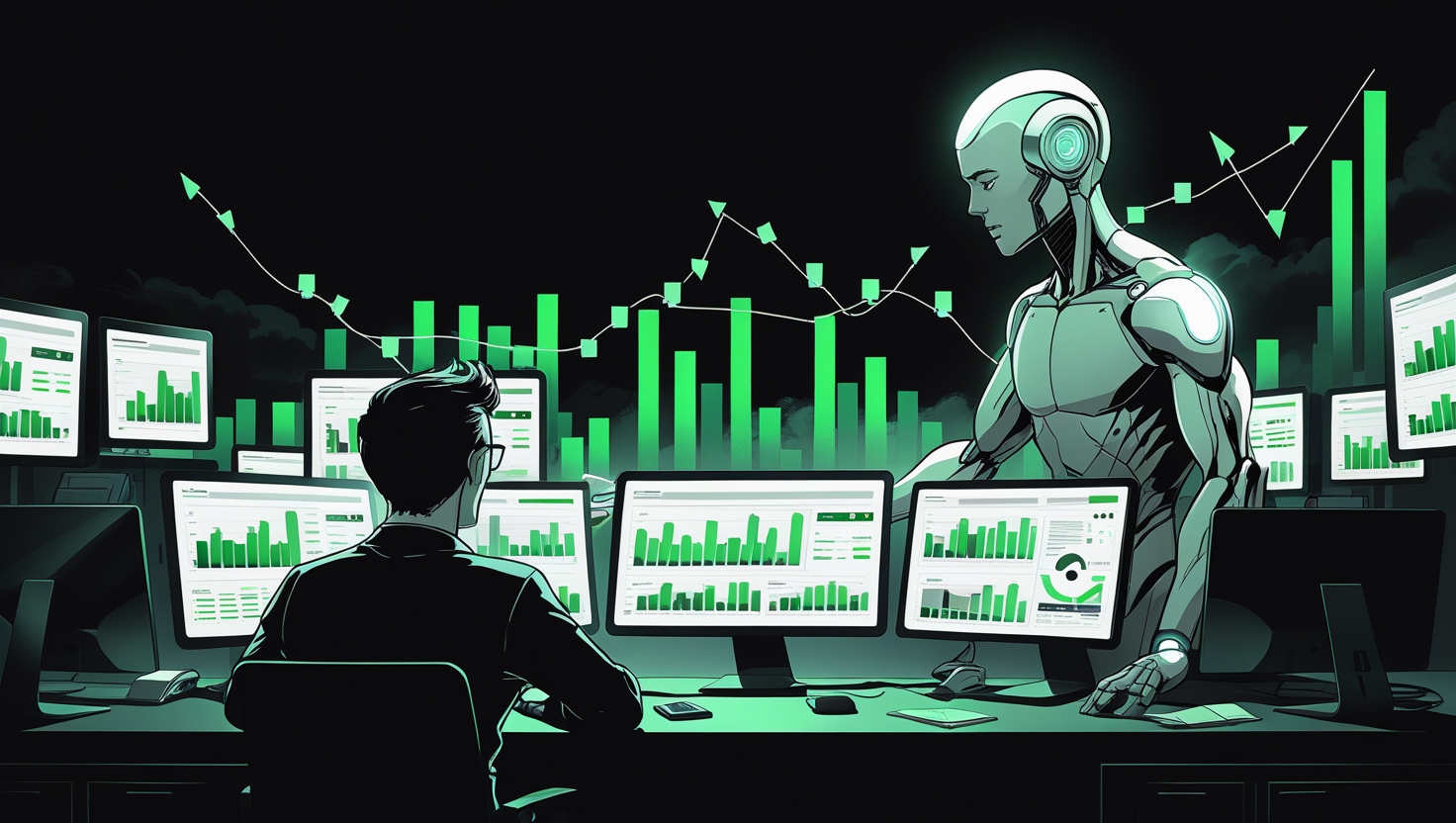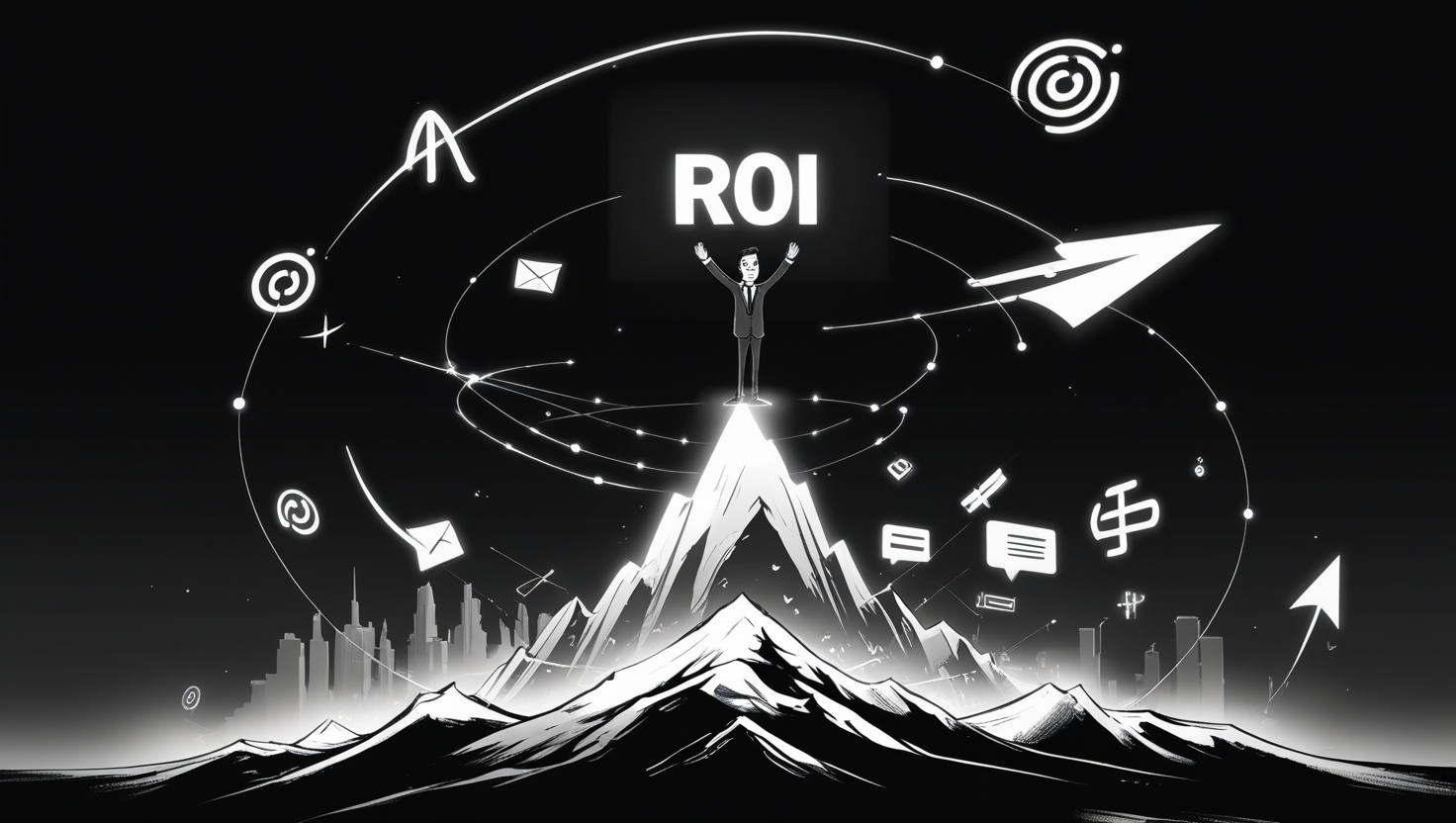Welcome to our deep dive into the revolutionary world of ad platform ai – where advanced machine learning meets the ever-evolving landscape of digital advertising. At Smarteconomix, we are passionate about exploring how artificial intelligence is reshaping advertising technology, helping businesses achieve unprecedented returns on investment. Have you ever wondered how automated targeting, advanced personalization, and real-time campaign optimization could transform your marketing strategy? Let’s dive in!

Understanding the Evolution of AI in Advertising Technology
The advertising industry has experienced a paradigm shift in recent years, thanks to breakthroughs in artificial intelligence and automation. Traditional methods are rapidly giving way to smarter solutions where data, algorithms, and predictive models are at the heart of decision-making. Platforms such as Google Ads, Meta Advantage, and various DSPs (Demand Side Platforms) have integrated ad platform ai solutions to achieve hyper-targeted advertising, making advertising less of a guessing game and more of a precise, science-driven endeavor.
For example, consider the influence of AI models like ChatGPT and DALL-E. These systems don’t merely generate content or images but are also used to forecast user behavior, optimize ad placements, and even personalize creative content. The integration of these smart tools is shifting the advertising narrative towards one where every advertising dollar is directed more efficiently. Have you noticed how personalized ads seem to understand your preferences better than ever before?
How AI is Reshaping Ad Platforms
The Rise of Automated Campaign Management
Modern ad platforms powered by AI are revolutionizing campaign management and optimization. By analyzing vast amounts of data in real-time, these systems can dynamically adjust bids, refine targeting criteria, and enhance the overall campaign strategy. Instead of setting static parameters, advertisers are now leveraging adaptive algorithms to manage complex campaigns with minimal human oversight. This shift not only boosts ROI but also significantly reduces the margin for error, making campaign management more efficient and less time-consuming.
Advanced Personalization and User Targeting
Those days of one-size-fits-all are over. The ad platforms of today fueled by AI can tailor creative content and messaging for every user according to their interaction history, behavioral patterns, and even predictive signals. This level of personalization is not just a nicety—it’s a necessity in today’s hyper-competitive marketplace. Imagine a conversation with each user loading an ad that is actually talking directly to them, blowing the engagement and conversion rates to astronomical figures. Isn’t it wonderful to witness the power of leveraging our incredibly detailed insights?
Analyzing Leading AI-Powered Advertising Platforms
Let’s take a closer look at some of the industry-leading platforms that have embraced AI to enhance advertising performance:
| Platform | AI Capabilities | Impact on ROI |
|---|---|---|
| Google Ads | Real-time bid adjustments, audience segmentation, and predictive analytics | Improved targeting, reduced waste, increased conversions |
| Meta Advantage | Dynamic creative optimization, personalized messaging, cross-channel integration | Enhanced personalization and user engagement |
| DSP Tools | Automated campaign planning, programmatic ad buying, user behavior forecasting | Optimized spend allocation and campaign efficiency |
These examples underline how AI-powered advertising technology leverages data-driven insights, ensuring that every decision is backed by solid analytics. The shift from static to dynamic marketing strategies represents an enormous opportunity for advertisers looking to outsmart the competition and achieve higher ROI.
Real-World Impact: From Data to Decisions
Consider the experience of a mid-sized e-commerce business that recently integrated an AI-enhanced ad platform into its marketing strategy. By utilizing an ad platform ai solution, the business was able to significantly refine its customer segmentation. The system was tracking user activity across several touch points like visits to the site, social conversations, and purchases. This resulted in extremely relevant and targeted advertisements to potential customers at exactly the right moment in the customer journey. The outcome was breathtaking—dramatic jumps in conversion rates and staggering reduction in wastage in spending on advertising.
Some advertisers have even claimed to use predictive models that foresee human activity based on historical trends, thereby predicting user requirements even before they emerge. Ever had an advertisement appear that seemed to know your mind? That’s the force of such sophisticated machine learning algorithms at play!
Embracing Ethical Considerations and Transparency
While the benefits of integrating AI into advertising platforms are clear, ethical concerns must also be addressed. Issues such as algorithmic bias, transparency in data usage, and privacy are at the forefront of this digital revolution. As businesses continue to adopt AI in advertising tech solutions, it is essential to implement measures that ensure fair treatment of all user segments and maintain rigorously transparent practices.
Advertisers need to answer tough questions: Are we using our advanced technology responsibly? Are our data practices compliant with privacy regulations? The challenge lies in striking a balance between leveraging sophisticated analytics to boost ROI and ensuring that ethical standards are maintained across the board.
Future Trends: AI, the Metaverse, and Beyond
Looking into the future, several emerging trends signal that the landscape of AI-powered advertising is set to grow even more complex and exciting. One promising development is the rise of AI-generated ads, where creative content, from text to visuals, is produced by intelligent systems. Imagine a scenario where your ad copy and imagery are constantly being refreshed and optimized by AI, responding instantly to market shifts and consumer behavior.
Another trend is the integration of advertising platforms with futuristic digital environments like the metaverse and voice search technologies. As these platforms become mainstream, they will bring about new modes of interaction and engagement, compelling advertisers to rethink their strategies once again. What might advertising look like in a virtual world where every interaction is data-rich and every decision is automated by AI?
Table: A Glimpse into the Future of AI in Ad Platforms
| Trend | Description | Potential Impact |
|---|---|---|
| AI-Generated Creative | Dynamic ad content creation powered by generative models | Reduced creative costs, enhanced personalization, real-time optimization |
| Metaverse Integration | Advertising solutions embedded in virtual and augmented reality platforms | New engagement channels, immersive brand experiences, data-driven interactions |
| Voice Search Optimization | Ad targeting tailored to voice query behavior | Improved discoverability, more conversational ad formats, enhanced user experience |
These trends are not just theoretical—they are actively reshaping how businesses plan, execute, and measure their advertising efforts. Staying ahead of the curve means adopting these advertising technology innovations as early as possible and continuously refining strategies to encompass new opportunities.
Strategies for Successfully Implementing AI in Your Ad Campaigns
Integrating ad platform ai solutions into your marketing strategy isn’t merely about installing new software; it’s about rethinking your approach to advertising. Following are some strategic alternatives that can be helpful:
First, companies must make an investment in data infrastructure and quality. The quality of the data that an AI system operates on has a big impact on how well the AI system will do, so having good data collection and management practices in place is key. Second, you need to adopt a test-driven approach. Use A/B testing and controlled experiments to measure the impact of AI-driven changes, and be prepared to move quickly on the basis of performance metrics.
On top of this, think about team skills and dynamics. Are your marketing teams equipped with the right understanding of such advanced tools? Cross-functional engagement among data scientists, marketers, and creative teams combined with training can help in the streamlined adoption of AI technologies. Think about your current team’s capability—can a little more training or a strategic partnership with an AI professional reveal better results?
Comparing Traditional vs. AI-Powered Approaches
The differences between conventional advertising strategies and those enhanced by AI are significant. Traditional methods rely heavily on historical data and manual adjustments, often leading to inefficiencies and delayed responses to changing market conditions. On the other hand, AI-powered systems offer real-time insights, agile decision-making, and predictive capabilities that enable your campaigns to adapt almost instantly.
To illustrate, a typical traditional campaign might require weekly reviews and manual bid adjustments, whereas an AI-driven strategy continuously optimizes in real time, ensuring that your advertising dollars are constantly being reinvested in the highest performing segments. This comparison alone is enough to drive serious consideration towards adopting a more dynamic solution. Isn’t it time to shift from reactive to proactive advertising?

Linking It All Together: Our Perspective on the Future of Advertising
At the crossroads of technology and creativity, ad platform ai represents not just a tool, but a fundamental shift in the marketing paradigm. The integration of advanced algorithms into advertising platforms heralds a future where decisions are faster, personalization is more accurate, and ROI is optimized beyond traditional limits. In our professional experience, the transition to AI-enhanced advertising is one of the most exciting developments we have witnessed in digital marketing.
For those curious about practical next steps, consider exploring additional resources such as our article on free advertising platforms, which highlights complementary strategies and techniques to further boost sales without breaking the bank. Combining these insights with a robust AI strategy can set the stage for marketing success in an ever-demanding digital age.
Have you embraced the future of advertising with AI? What challenges do you foresee on your path to integrating these technologies? Reflect on these questions and consider how your business might leverage the power of AI to stay ahead in a competitive market.
As we move into a future defined by rapid digital transformation, embracing advanced advertising technologies will be essential for businesses of all sizes. We hope this article has provided valuable insights into how ad platform ai can revolutionize your marketing strategies and deliver impressive returns. Happy advertising!
What future trends will shape the use of AI in advertising?
Looking ahead, future trends in AI for advertising include the rise of AI-generated creative content, integration with emerging technologies such as the metaverse, enhanced voice search optimization, and more sophisticated predictive analytics. These innovations are expected to further personalize customer experiences and drive new levels of engagement in digital marketing.
Can small businesses benefit from ad platform ai solutions?
Absolutely. Small businesses can gain a competitive edge by adopting AI-driven ad platforms. These solutions help automate routine tasks, optimize ad spend, and offer detailed insights into consumer behavior, leveling the playing field with larger competitors. With the right strategy and quality data, even modest budgets can see significant improvements in campaign efficiency.
What ethical considerations should be taken when using AI in digital advertising?
Using AI in digital advertising raises important ethical concerns, including algorithmic bias, data privacy, and transparency in data usage. Advertisers must implement robust measures to ensure that their AI systems operate fairly and comply with privacy regulations. It is also vital to maintain clear communication with consumers about how their data is used to build trust and credibility.
